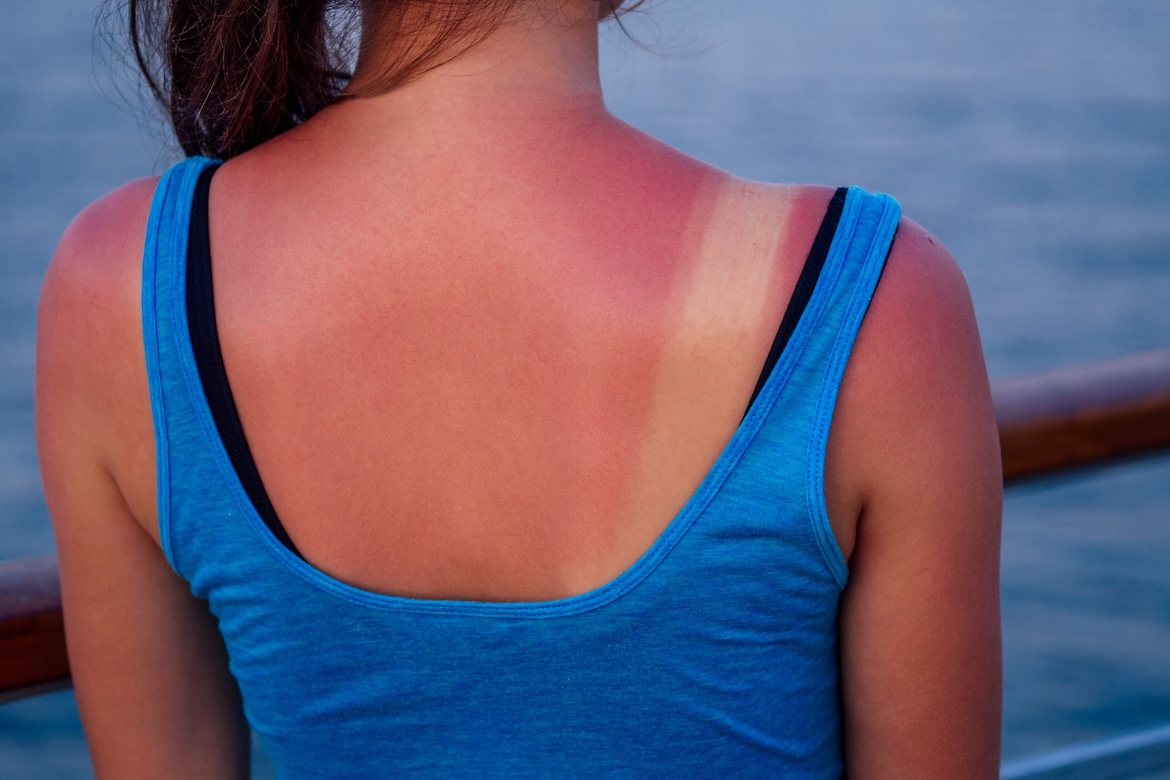Celebrate Independence Day in style—safely! Discover how to protect your eyes and ears from the...
Read More
Although we all do our best to protect our skin from the sun, more than 1 out of 3 Americans report getting a sunburn each year. Here’s what you need to know about sunburn treatment and care.
“Sunburn is an inflammatory response caused by overexposure to ultraviolet (UV) rays from the sun or artificial sources such as tanning beds,” said Kreena Shah, M.D., a physician with Inspira Medical Group Primary Care. “Overexposure to the sun burns the skin and causes painful reddening that can lead to peeling and blistering.”
Sunburns are categorized based on their severity:
Most sunburns are first- or second-degree and get treated at home. If you’re concerned about the severity of your sunburn or how it’s healing, reach out to your doctor. They can diagnose your condition and help you get the care you need.
According to the American Academy of Dermatology (AAD), start treating your sunburn as soon as you notice it. “If you realize you have a sunburn, the first thing you should do is get out of the sun and head indoors,” said Dr. Shah. “Limiting exposure to the sun can minimize the severity of the sunburn and expedite the healing process.”
Once you’re out of the sun, take the following steps to treat your sunburn and minimize discomfort:
In rare instances, mild or moderate sunburns can devolve into a condition known as hell’s itch. Hell’s itch is an agonizing itch on your sunburn that causes an uncontrollable, stabbing pain when it’s scratched. It’s unclear what triggers this reaction, but people with fair skin whose sun exposure happens at high altitudes seem to be the most susceptible.
Treatment for hell’s itch includes ibuprofen, antihistamines, hydrocortisone cream and hydration. However, if you have severe symptoms such as fever, chills, dizziness or blisters over a large area of your body, call your doctor right away.
“Most sunburns can be treated at home and go away on their own within a week,” said Dr. Shah. “Severe sunburns take longer to heal and can have complications such as infection.” Seek immediate care for your sunburn if you experience any of the following symptoms:
Inspira Health is a high reliability organization (HRO), which means safety is the top priority for patients and staff. To make an appointment, call 1-800-INSPIRA.

Celebrate Independence Day in style—safely! Discover how to protect your eyes and ears from the...
Read More
Are you concerned about being underweight? While much attention is placed on the health risks of...
Read More
Approximately 2 percent of the population is affected by scoliosis. Although diagnosis can happen at...
Read More